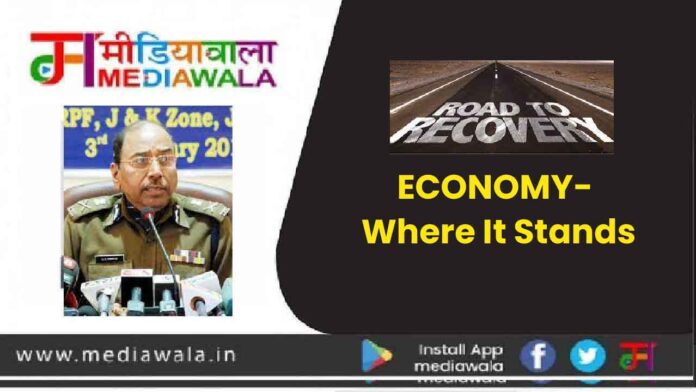
India has passed through last two difficult years due to COVID-19. Extended lockdowns have adversely impacted industrial and commercial activities and increased unemployment. In spite of this grim scenario, IMF has estimated India’s GDP growth for 2021 at 9.5% and for 2022 at 8.5%. This will make India the fastest growing emerging market. Analysing the GDP growth in 2021 IMF feels that this growth is not simply recovery from Covid 19, but it shows India is back on real fast growth after 2016–17. There are sceptics who are not sure about India’s growth at this pace for long term.
There has been very encouraging tax collection in the outgoing year. Compared with the pre-Covid period two years ago, tax revenue has grown at a rate of 16% per year, corporate tax at 23%, excise duty at 34% and GST at 6%. This will definitely ease the situation of fiscal deficit and and will give leverage for capital expenditure.
India’s performance in exports had always been lacklustre. Since 2014 exports have hovered around $300 billion, however this is likely to have risen to nearly $400 billion in 2021. This is estimated to be 17% hike in exports earnings. India’s imports have also increased but overall current account deficit is likely to remain in the safe zone of 2–2.5% of GDP. During this period India has created over hundred unicorns, mainly due to FDI coming to Digital enterprises.
However, there are many economic and political pitfalls for the year 2022. Unemployment is the biggest challenge before the Indian economy. Unemployment has been the biggest failure of Modi government. According to CMIE, in 2021 unemployment rose from 2% to 7.5%. India’s demographic advantage is going waste in this early part of 21st century.
This advantage has to be exploited before demography changes after a few decades. Another challenge before the economy is rising inflation. Even though the consumer price index puts inflation at 4.9% in November, the wholesale price index has been in double digits for eight months culminating in unacceptable 14% in November.
This will affect the purchasing power of the people and have serious repercussions on the economy. Central banks all over the world, including RBI, are mulling about increasing bank interest rate to control the inflation. Any rise in interest rate in US and EU countries will adversely affect the inflow of FDI. This will negatively impact Indian stock market and unicorns.
A bigger challenge to the Indian economy is the setback to the process of reforms. The rude shock to the reforms by annulment of three Agriculture Acts will retard the pace of the reforms due to dampening political will. The government is withholding the implementation of four Labour Laws passed by the Parliament.
One of the most rotten sectors of India is electricity distribution. Cumulatively state electricity boards have losses of Rs 1.2 lakh crore. The government has no capacity or will to privatise this sector due to stiff resistance of employees. In spite of this situation, there is irrational auction of freebies in electricity by all political parties. Subsidy on electricity has been detrimental to underground water table.
BJP is not likely to pursue any robust reform agenda. It is more likely to shift its agenda to communal and divisive policies to stay in course. Other parties are eager to come to power with even more regressive economic plans. It is only the animal spirit of Indian entrepreneurs that is somewhat undoing the licentiousness of Indian politicians.







